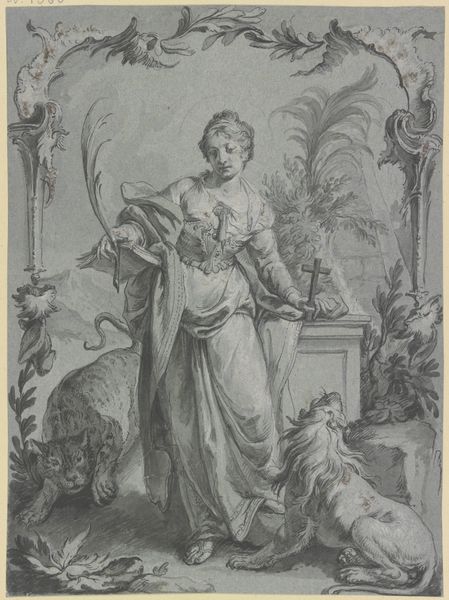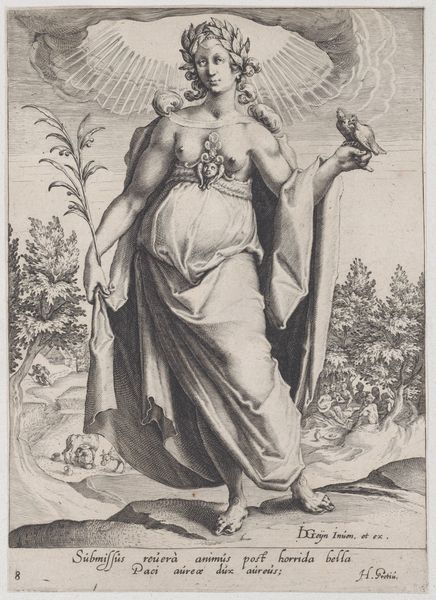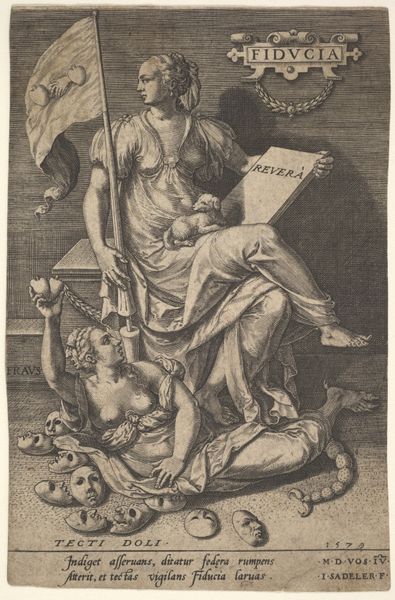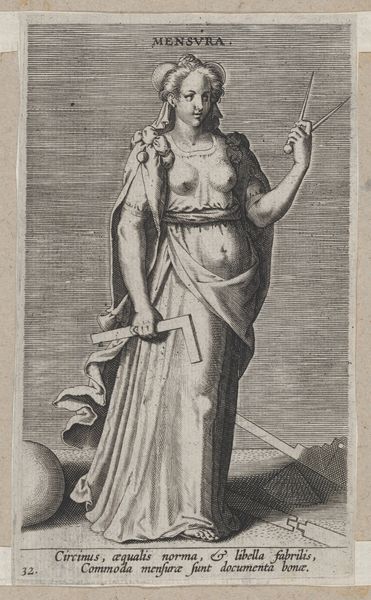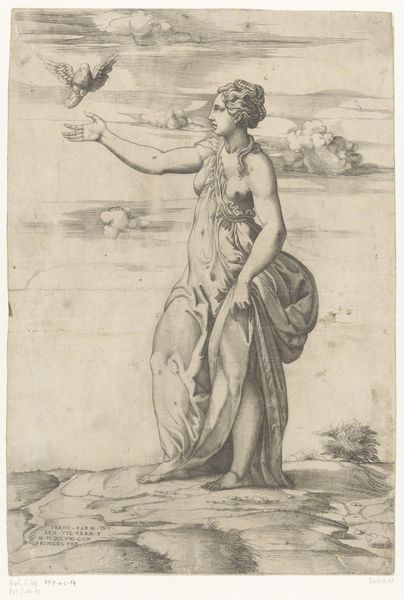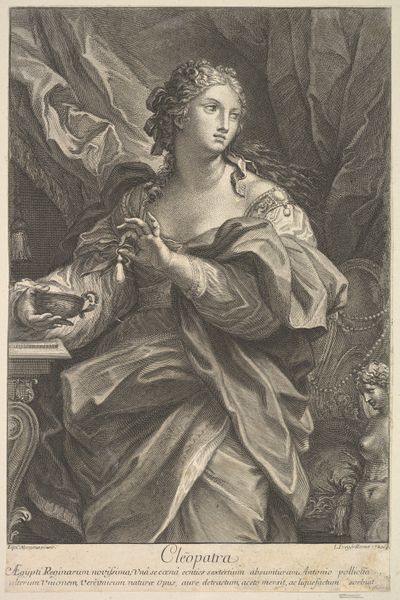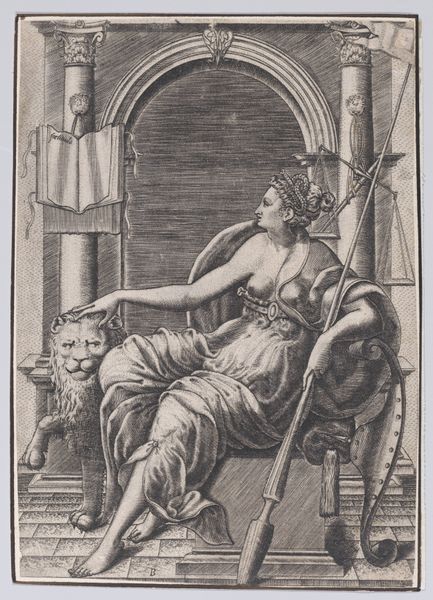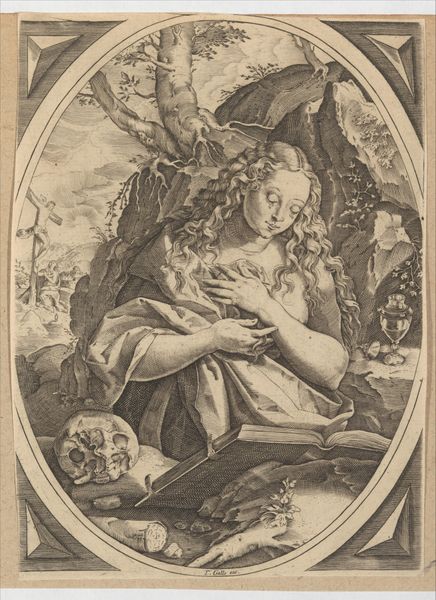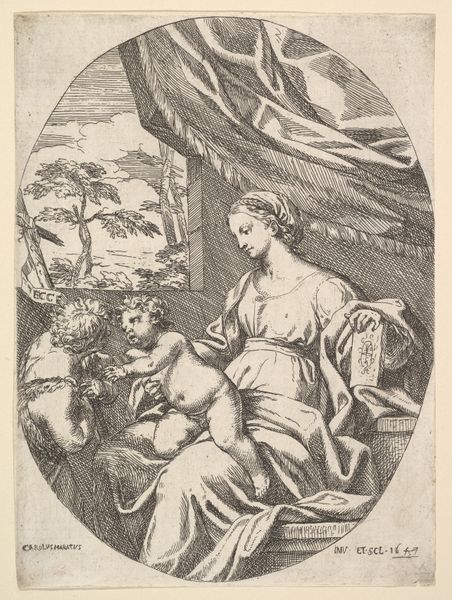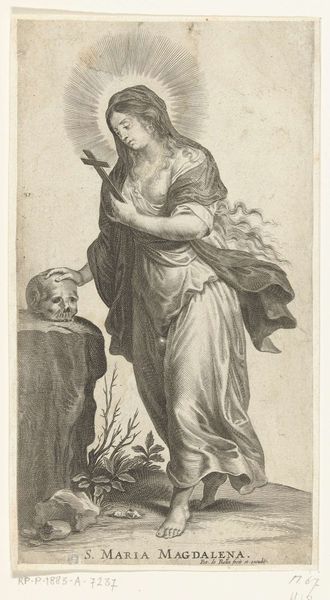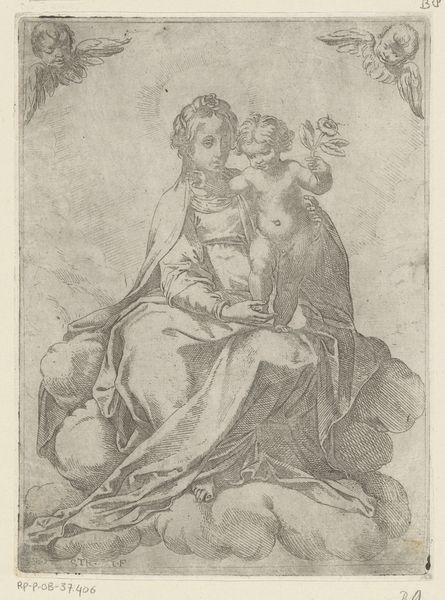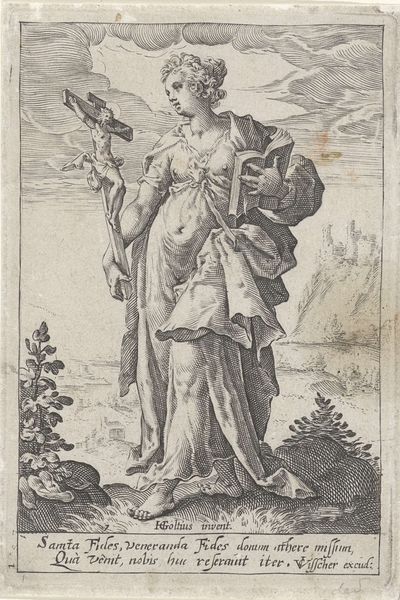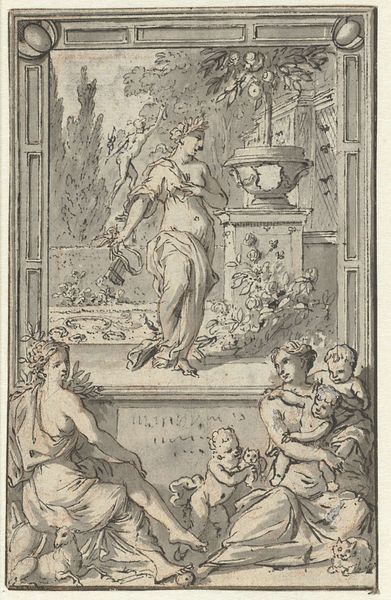
print, engraving
#
baroque
# print
#
figuration
#
history-painting
#
academic-art
#
nude
#
engraving
Dimensions: plate: 16.9 x 14.2 cm (6 5/8 x 5 9/16 in.) sheet: 18.5 x 15.5 cm (7 5/16 x 6 1/8 in.)
Copyright: National Gallery of Art: CC0 1.0
Curator: Here we have a 1740 engraving by Christian Wilhelm Ernst Dietrich, simply titled "Painting." What are your initial impressions? Editor: Oh, she's luminous, isn't she? There's a delicate confidence, but almost like she's stepped out of a dream. She feels both present and timeless, existing somewhere between then and now. I suppose her knowing gaze contributes to the timeless feeling... What I'm particularly drawn to are the rich textures of the fabric draped so expertly across her, its gentle creases contrasting with the hardness of the stone sculpture in the background, and her painter's pallet of course! Curator: Let's delve a bit deeper into those contrasting textures and materials. Dietrich, working in the Baroque style, certainly would have been very mindful of contrasting smooth skin against fabric folds. The print medium, through engraving, allows for incredible detail, especially in conveying the sheen of those draperies. I’d also like to consider this piece as a form of commodity. This print would have been fairly reproducible and circulated widely for educational and collection purposes, increasing access to art in this period. Editor: Commodity… that's such a cold word to apply to something so ethereal! But of course, you're right. It changes the dynamic of the work, doesn’t it? If it was meant to be mass produced, that introduces the idea of who was going to buy the work. A certain upper class? An educated merchant? What kinds of stories do we read into the nude sculpture, and nude artist? She’s an allegorical figure, but she also presents this real vision of feminine power. Is she complicit in, or challenging of these dynamics? The themes surrounding her begin to multiply and complicate as we consider all the moving parts of artistic production in this period! Curator: Precisely. We have a convergence of themes here; figuration, the nude, history painting all presented through an academic style designed for dissemination. It’s not just an image; it's evidence of a complex economic and cultural network, powered by labor, skills, and the appetite for art. Editor: I love that—the appetite for art! Even centuries later, it persists, doesn’t it? I feel incredibly connected to this moment when someone took up a burin and meticulously carved out this image from start to finish… there’s just something about her and that pallet of paint. It's really quite charming and memorable. Curator: It certainly leaves its mark, not just on the paper, but on our understanding of art's place in history.
Comments
No comments
Be the first to comment and join the conversation on the ultimate creative platform.
